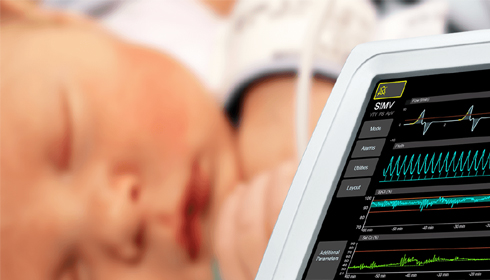
Prolonged mechanical ventilation in newborns can damage lung: Study
In groundbreaking research, Jonas Naumann and Mareike Zink from Leipzig University reveal that premature lungs exhibit heightened stiffness compared to adult counterparts during mechanical ventilation. This inherent sensitivity leads to disturbances in vital transporters, impeding the removal of post-birth lung fluid. The findings, presented at the 68th Biophysical Society Annual Meeting recently, underscore the need for nuanced approaches in ventilator settings to optimise outcomes for premature infants requiring respiratory support.
The study sheds light on the challenges faced by many premature infants who require mechanical ventilation to facilitate breathing. Prolonged ventilation can result in respiratory diseases or ventilation-induced injuries, prompting the need for a deeper understanding of the physiological impacts of this life-saving intervention.
"When you are undergoing mechanical ventilation, you are creating hydrostatic overpressure. And the forces acting during mechanical ventilation are completely different from those acting during normal breathing. And this is probably causing some damage to the cells," explained Mareike Zink, one of the researchers involved in the study.
The research team, in collaboration with the Division of Neonatology at the University Clinic Leipzig, utilised lung tissue from foetal and adult rats to mimic the conditions of mechanical ventilation. Even with minimal pressure, premature rat lung tissue exhibited characteristics of both elasticity and viscosity, indicating abnormal responses to stress. Notably, the foetal lung was observed to be much stiffer than the adult lung under deformation.
To investigate the impact of tension-related changes on sodium transport—a vital process for removing water from the lungs at birth—the team employed electrophysiology to measure ion movement across premature lung cells. The study revealed that pressure changes significantly influenced the activity of two channels crucial for sodium transport: the epithelial sodium channel and the sodium-potassium ion pump in the cells of lung alveoli. Disruptions in the normal functioning of these transporters could explain the negative effects of mechanical ventilation on infant lungs.
"This may be the reason why lung fluid cannot get absorbed that well into the circulation after preterm births," said Jonas Naumann, expressing the need for further research on ventilator settings for better outcomes in preemies. He emphasised, "Small pressure gradients can have such a big impact on lung mechanics."
The researchers are now set to explore the role of the lung tissue's extracellular matrix—the scaffolding and glue that holds cells together—in mechanical ventilation. By gaining a better understanding of how premature lungs respond to pressure, they hope to pave the way for improved therapies for babies born early. This research marks a significant step forward in addressing the challenges faced by premature infants undergoing mechanical ventilation, with potential implications for refining clinical practices and enhancing outcomes for this vulnerable population.